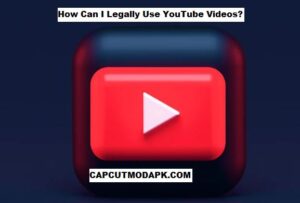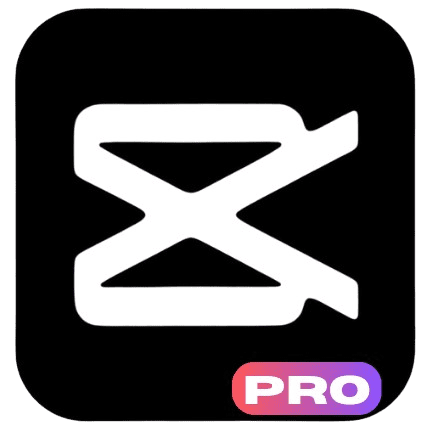Legal Guide For YouTube Creators: YouTube has become a powerful platform for content creators to share their work with a global audience. But along with the freedom of uploading videos comes a range of legal considerations. Whether you’re a seasoned YouTuber or just starting out, understanding the legal aspects of content creation is crucial. From copyright issues to monetization concerns, a solid grasp of YouTube’s rules and regulations will help you navigate the platform without getting into legal trouble.
In this legal guide for YouTube creators, we’ll cover essential topics such as the rules of YouTube creators, permission requirements for using others’ content, and how to legally make money from your videos. Understanding these aspects of YouTube can prevent unnecessary headaches, help you avoid content removal or channel bans, and allow you to focus on creating great videos. If you plan to grow your channel and earn revenue, this guide will be an invaluable resource to keep you on the right side of the law.
Being a YouTube creator offers immense opportunities, but it also requires knowledge of the platform’s policies and legal regulations. Whether it’s about getting permission for using third-party content or understanding how YouTube’s monetization system works, this legal guide for YouTube creators will ensure you’re well-informed and compliant with the platform’s rules.
Also, Read Copyright Laws For Creators
What Are the Rules of YouTube Creators?
As a YouTube creator, you’re responsible for adhering to YouTube’s community guidelines and copyright policies. YouTube’s rules are in place to protect both creators and viewers, ensuring the platform remains a safe and lawful space for everyone. The primary rules are based on three key areas: copyright, content violations, and monetization.
First, creators need to respect copyright law. This means you cannot upload content that you don’t own or have explicit permission to use. For example, using copyrighted music or videos without the right to do so can result in your content being removed or even your channel being banned. YouTube uses a system called Content ID to automatically detect copyrighted material. If your video includes copyrighted content, the owner may choose to block, monetize, or take down your video.
Second, YouTube has strict content guidelines. Videos promoting hate speech, violence, or harmful activities can be flagged and removed. This includes videos that encourage discrimination or harassment, or those with graphic violence. YouTube also prohibits adult content, misleading titles, and spammy behavior. Violating these rules can result in warnings, demonetization, or the permanent removal of your channel.
Lastly, YouTube’s monetization policy requires creators to comply with YouTube’s Partner Program terms. To earn money from ads, you must meet certain criteria, like having at least 1,000 subscribers and 4,000 watch hours in the past 12 months. If you violate any of these policies, your monetization privileges may be revoked. By following YouTube’s rules, you ensure your content stays online, and your channel remains in good standing.
Do YouTubers Need Permission?
Yes, YouTubers do need permission to use content that isn’t their own. This includes music, images, video clips, and even certain phrases or logos. The general rule is simple: if it’s not yours, you need permission. This permission can come in the form of a license or direct approval from the content owner. Failing to get permission can lead to serious consequences like copyright strikes, content removal, or even a channel ban.
There are some exceptions, like using content that’s in the public domain or falls under “fair use.” Fair use allows you to use copyrighted material for things like commentary, criticism, or parody, but these uses are limited and often subject to interpretation. If you’re not sure if your use qualifies as fair use, it’s safer to get permission or avoid using the content altogether.
One of the most common areas where YouTubers need permission is music. Many creators mistakenly use popular songs in their videos without licensing them, which can lead to content being taken down. To avoid this, consider using royalty-free music or subscribe to services that provide licensed tracks for YouTube use. YouTube also has a library of free music that creators can use in their videos without worry.
How Can I Legally Use YouTube Videos?

Using other YouTube videos in your content can be tricky, as copyright laws apply to all uploaded content. If you want to use someone else’s video in your own, you need to follow some key rules to do so legally. One option is to ask the original creator for permission, either by contacting them directly or through a licensing agreement. If they agree, you can include their content as part of your video without fear of copyright issues.
Alternatively, YouTube offers a “Creative Commons” license option. If a video is uploaded under this license, it means the creator has given permission for others to reuse the content, usually with proper attribution. Keep in mind, though, that not all videos on YouTube are available under this license. You can check whether a video is licensed this way by looking for the Creative Commons icon or reviewing the video’s description.
Another option for legally using other YouTube videos is using a fair use argument. However, fair use is often difficult to prove and can result in legal battles. It typically covers uses like commentary, reviews, or educational content. If you plan to use someone else’s video for these purposes, you should ensure that your use complies with fair use criteria, which include factors like the amount of the original work used and the transformative nature of your work.
How Much Will YouTube Pay for 1000 Views?
YouTube earnings depend on several factors, such as the region your audience is in, the type of content, and the ads displayed on your videos. On average, YouTube creators can expect to earn anywhere from $1 to $5 per 1,000 views. This rate can vary widely, with higher-paying niches (like technology or finance) earning more per view than other types of content.
The amount you make per 1,000 views is also influenced by ad engagement. If viewers click on ads or watch them to completion, your earnings per view can increase. YouTube uses an ad revenue model called CPM (cost per thousand impressions), which means advertisers pay a set amount for every 1,000 views their ad receives. If your audience engages well with ads, your CPM can rise, boosting your income.
Keep in mind that YouTube takes a 45% cut of ad revenue, so creators only receive 55% of the total earnings. This means that your actual earnings will be lower than the $1-$5 per 1,000 views, but the potential for substantial revenue grows as your views and subscriber count increase. For many creators, YouTube ad revenue is just one part of the income equation—many also use affiliate marketing, sponsorships, and merchandise sales to earn money.
How Many YouTube Subscribers Do I Need to Make $2000 a Month?
To make $2,000 a month from YouTube, you need to have a decent number of views, as subscriber count alone doesn’t directly translate into earnings. However, it’s helpful to know that subscribers are important because they increase your potential for consistent views. Typically, you need about 1,000 subscribers and 4,000 watch hours in the last 12 months to apply for monetization through the YouTube Partner Program.
In terms of earnings, if you earn around $2 per 1,000 views (CPM), you would need roughly 1 million views per month to make $2,000. The more views and engagement you get, the higher your income will be. This means that you would need to produce content that attracts a large audience consistently to reach your goal of $2,000 per month. Other income streams, such as sponsored content or merchandise, can also help boost your earnings.
Keep in mind that not every view will generate the same amount of revenue. Factors like the type of ads shown, the geographical location of your audience, and the level of viewer interaction with ads will all influence how much money you make.
How Much Does 1 Million Views on YouTube Pay?
The amount of money earned from 1 million views on YouTube varies depending on several factors. On average, creators can earn anywhere from $2,000 to $5,000 for 1 million views, but this is not a fixed amount. The CPM rate varies by audience location, content type, and the type of ads displayed on your videos.
For example, videos targeting U.S. viewers might earn more than videos targeting audiences in other countries because advertisers often pay higher rates to reach U.S. viewers. Additionally, content with higher engagement levels (such as clicks on ads) tends to earn more than content with lower engagement.
While the ad revenue model is the most common way creators earn money, it’s important to note that creators often earn additional income through sponsored videos, affiliate links, and merchandise sales. These income streams can significantly increase earnings, especially for channels with large and loyal audiences.
How Much Money Is 100K Views on YouTube?
For 100,000 views, YouTube creators can typically earn between $100 and $500, depending on their CPM rate. The actual amount depends on factors like the engagement level of the video, the type of content, and the audience demographic. Creators can increase their earnings by ensuring their videos have good viewer retention and ad engagement.
Even though 100,000 views might not make you rich, it’s a good starting point for building a monetizable channel. As you continue to grow your channel, you’ll have the opportunity to earn more through ads, sponsorships, and other monetization methods.
What Is the Monthly Income of a YouTuber?
The monthly income of a YouTuber varies greatly depending on their views, audience engagement, and additional revenue streams. A new YouTuber might earn only a few dollars a month, while a seasoned creator with millions of views could earn tens of thousands of dollars monthly. Most YouTubers earn money through the YouTube Partner Program, which pays based on ad revenue.
Additionally, many YouTubers supplement their income with brand deals, sponsorships, and merchandise sales. While a large portion of YouTube creators may earn a modest amount, the platform can be quite profitable for creators with a dedicated audience and a solid content strategy.
Conclusion
Navigating the legal side of YouTube content creation can be complex, but it’s essential for protecting your channel and earnings. By following YouTube’s rules, obtaining permission for copyrighted material, and understanding monetization, creators can avoid legal issues and focus on growing their channels. The Legal Guide for YouTube Creators has provided essential information on rules, permissions, and income, helping you make informed decisions as you build your content empire. Keep these legal guidelines in mind to ensure your success on YouTube while protecting your creative work.



One thought on “Legal Guide For YouTube Creators”